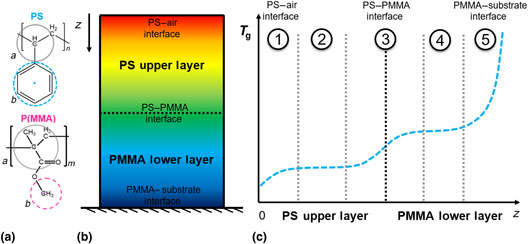Article contents
Dynamics of interacting interphases in polymer bilayer thin films
Published online by Cambridge University Press: 17 October 2017
Abstract

We investigate how the local glass-transition temperature (T g) depends on film thickness in monolayer and bilayer thin films with a polystyrene (PS) upper-layer and a poly(methyl methacrylate) (PMMA) lower-layer using coarse-grained simulations. Interactions between overlapping interphases demonstrate a superposition principle for describing their glass-transition behaviors. For supported bilayer films, the free surface effect on a PS film upper-layer is effectively eliminated due to an enhanced local T g near the PS–PMMA interface, which cancels out depressed T g near the free surface. However, at very low PMMA lower-layer thicknesses, the PMMA-substrate effect can penetrate through the polymer–polymer interface, leading to enhanced T g in the PS upper-layer.
- Type
- Research Letters
- Information
- Copyright
- Copyright © Materials Research Society 2017
References
- 9
- Cited by



